Little David Mortar: The Largest Gun in the World
The US military increasingly thought about a possible invasion of the territory of Japan itself. It was assumed that in their own land, the Japanese Imperial Army would put up very fierce resistance on the previously prepared defense lines. As a means of destroying the long-term fortifications of the Japanese, a mortar of a very large caliber - 914 mm (or 36 inches) was proposed. According to this indicator, the American project, which received the playful name Little David (Little David), surpassed the German artillery systems of super-large caliber known today all over the world, like "Karl" (600 mm) and "Douro" (807 mm).
The unique American mortar, which still holds the record for the largest caliber among all modern artillery, was created on the basis of an experimental system designed to test aviation large bombs. The mortar was distinguished by the fact that, with a caliber larger than that of the German giants of the Second World War, it was more compact than them, however, its firing range was quite modest. Structurally, an unusual artillery mount was a barrel slightly more than 7 meters long and weighing more than 36 tons and a stationary base in the form of a box, which had to be buried in the ground, weighing about 46 tons. The transportation of the two main parts of the mortar was carried out by two tank transporters.
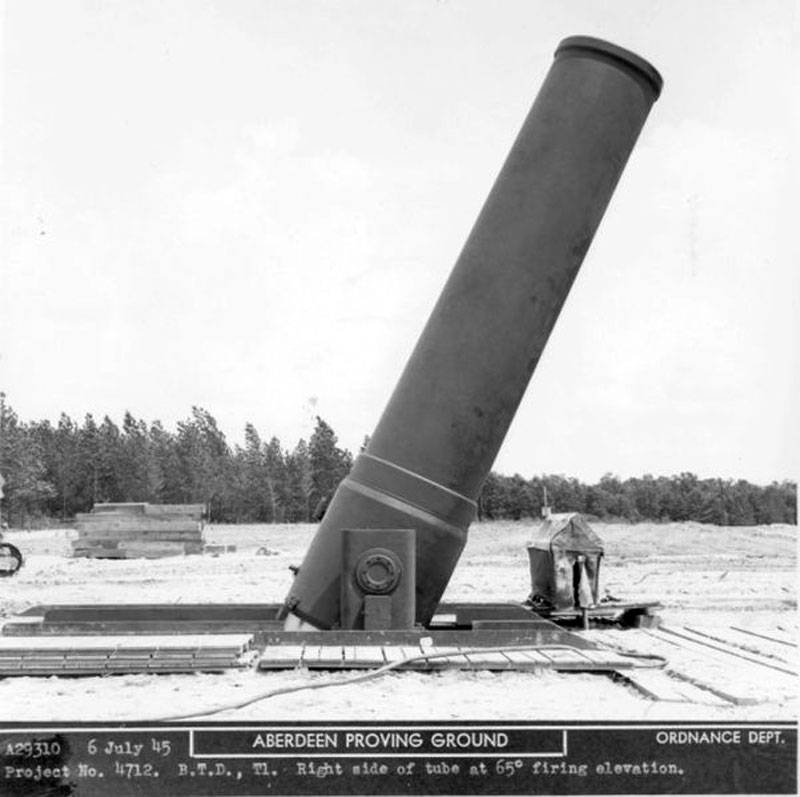
During the Second World War, the American army often used decommissioned barrels of large-caliber naval guns to test aerial bombs. The tests were carried out using relatively small powder charges, which were sufficient to send a bomb to a distance of several hundred yards. Such systems were used by Americans because with the usual dropping of bombs from an airplane, much depended on the change in weather and the ability of the bomber crew to accurately fulfill all the test conditions. With the increase in the caliber of bombs 9- and 12-inch gun barrels are no longer suitable for these purposes. Therefore, in the US, it was decided to create a device that received the designation Bomb Testing Device T1.
This device is very well proven, and the experience formed the basis of the idea of using it as an artillery gun. It was planned to use it against enemy fortified objects, mainly well-defended fortifications. The Americans were very afraid to meet the deep-echeloned defense of the Japanese islands with a large number of fortifications and bunkers. The project was launched in March 1944, in the same year, but already in October, test shooting began. The US military expected to have a more powerful weapon at their disposal than the 16-inch guns that were on the Iowa type battleships. During the battle for Iwo Jima in February-March 1945, the 1200-kg shells of these guns showed their lack of effectiveness against Japanese bunkers located on the island.
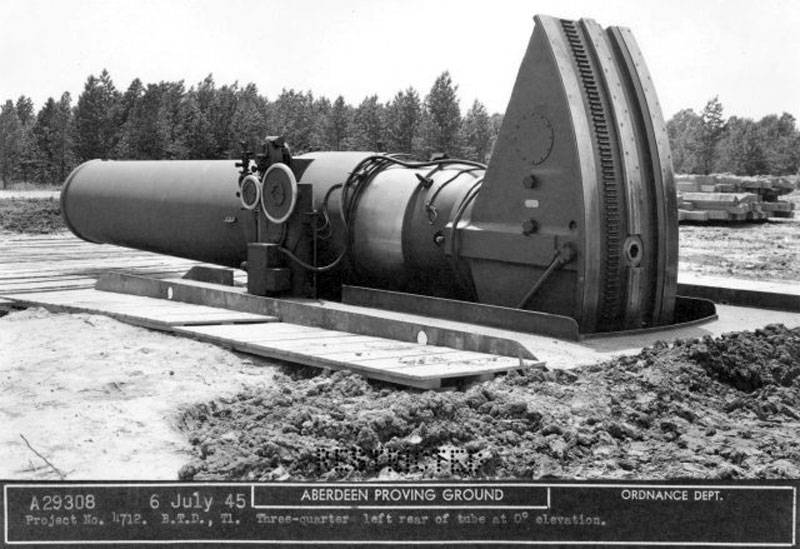
Externally, the Little David Mortar 914-mm Mortar was created in the USA. It was a barrel-gunned mortar with a rifled barrel that rested on a large steel box (5500x3360x3000 mm) weighing over 46 tons, dug into a deep hole. In the steel box, which was the base of the mortar, there was a vertical guidance mechanism, as well as six hydraulic jacks designed to install and remove the barrel, which weighed more than 36 tons. The barrel of the mortar was lowered and raised with the help of a “quadrant” driven from the breech, the width of the box allowed for horizontal guidance of the mortar. The thumb of the mortar was missing, the hydraulic recoil brake was concentric. A pump was used to return the barrel to its original position after the shot.
Especially for this mortar was created a unique projectile T1-HE with a long cone-shaped nose and cuts, which should coincide with the rifling of the barrel for reliable obturation. The mass of the projectile was 1678 kg (3700 pounds), of which 726 kg (1600 pounds) was the mass of the explosive. Mortar could send such a projectile to a distance of 8687 meters (9500 yards). Charging was carried out with a muzzle cut, split cap. At zero elevation angle, the T1-HE projectile was fed into the barrel with a crane, after which it advanced some distance, then the mortar barrel was raised, and further loading was carried out under the action of gravity. In the nest, which was located in the breech, was inserted primer-igniter. The mass of the total charge was 160 kg, and the 18 and 62 kg bags were used. It was believed that the destructive impact of such a projectile would be enough to destroy any goals. The funnel, which remained at the point of rupture, reached 12 meters in diameter and 4 meters in depth.
Mortar was created in a single copy and never left the location of the Aberdeen Proving Ground, and therefore did not participate in the hostilities. Tests of artillery installation was delayed, the Second World War ended, and the invasion of the Japanese islands was not required. Therefore, the work on the mortar was frozen at the stage of finishing tests. At the same time, the main disadvantages of the 914-mm artillery system, which included a small firing range (less than 9 kilometers) and insufficient accuracy, could not be eliminated. The project was completely closed in 1946 year.
Not inspired by the US military and 12 hours, which were required for the deployment of mortars and equipment positions. In fairness, it is worth noting that the German superheavy 800-mm Dora gun was transported by 25 special railway platforms, and the process of bringing the gun into combat readiness with the arrangement of the position for shooting took weeks. Near Sevastopol, it took the Germans 4 weeks to arrange the position, with more than three thousand people participating in the work, including prisoners of war. In this regard, the Little David American mortar was much more mobile, and it was much easier to deploy it. For its transportation, two powerful tank transporters M25 Tank Transporter (G160) with the wheel formula 6х6 were used. One transporter transported the receiver, the second - the box-base. Thus, the mortar was much more mobile railway guns. In addition to the 914-mm mortar itself, the unit included a bulldozer, a crane and a bucket excavator, which were supposed to be involved in the artillery position equipment.
After the closure of the project, the Little David became a museum exhibit and today is represented in the extensive exhibition of the Aberdeen Artillery and Technical Museum. Here everyone can see the barrel and the box-base mortars, which rest on the wheels of the conveyors, as well as one of the unique shells. Of interest are also the video frames of tests of this artillery "monster" that have survived to the present day.
Little David mortar performance characteristics:
Caliber - 914 mm.
The total weight is more than 82 tons (together with the base).
Length - 8534 mm (receiver part).
Barrel length - 7120 mm (L / 7,8).
Elevation angle - from + 45 ° to + 65 °
The horizontal guidance angle is 26 °.
Projectile weight - 1678 kg.
The mass of explosives in the projectile - 736 kg.
The initial velocity of the projectile - 381 m / s.
The maximum firing range - 8687 m.
Deployment time - 12 hours.
Information sources:
http://www.popmech.ru/weapon/234030-samoe-krupnokalibernoe-orudie-v-mire/#full
http://warspot.ru/5574-samoe-tolstoe-orudie-v-mire
http://www.shooter.com.ua/specialnye-zadachi/327-914-mm-mortira-malenkij-david.html
Open source materials
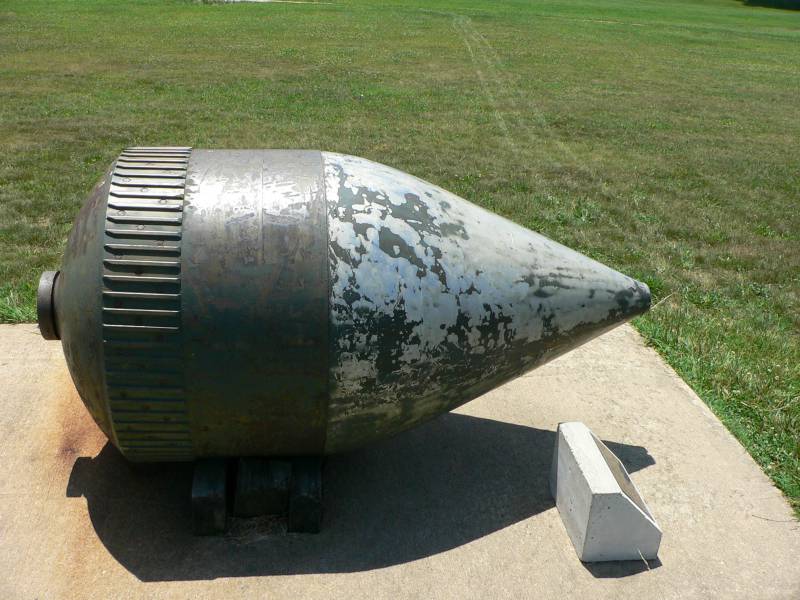
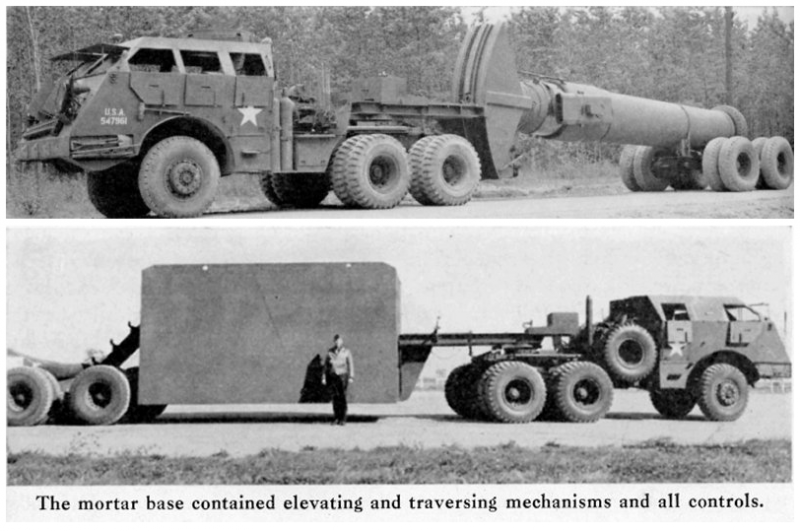
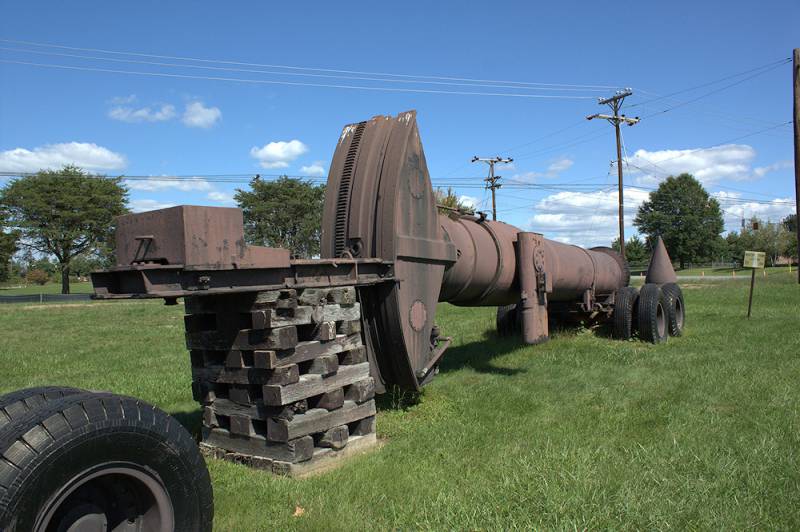
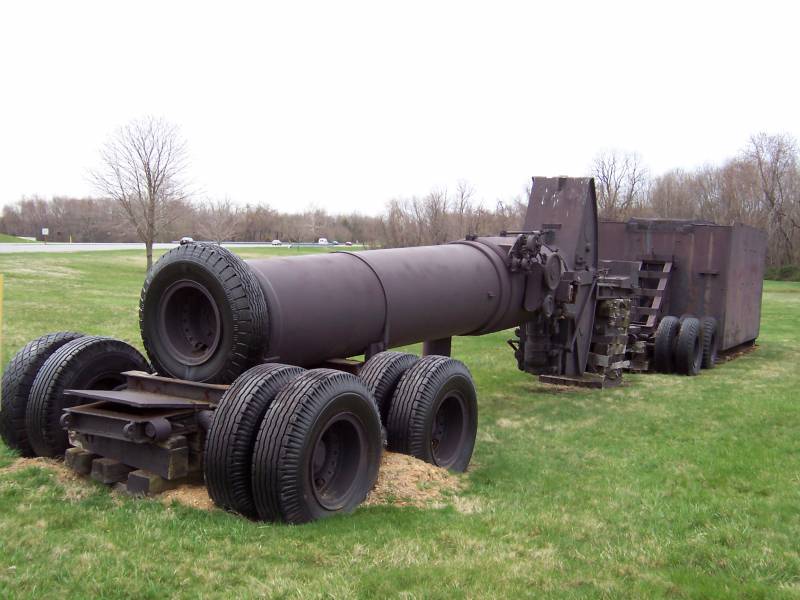
Information